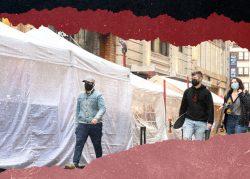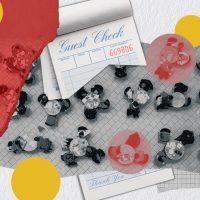Is there much of a difference between indoor dining and those outdoor plastic bubbles that restaurants across New York now employ? Not really, it turns out.
Both options hold similar risks because they provide little airflow as people sit in close proximity to each other, according to a report on the “Today” show.
“If you’re putting together something that has a roof and four walls outside, it is called an indoor enclosure outside,” Gregg Gonsalves, an assistant professor of epidemiology at the Yale School of Public Health, told Today.
Under current city guidelines, tents are permitted. However, at least 50 percent of the tent’s sidewall surface area must remain open or — in full tent enclosures — occupancy limitations must be capped at 25 percent capacity, and indoor dining guidelines must be followed.
And while tents or bubbles may be more porous than walls, they still limit airflow, which is necessary to prevent the spread of coronavirus.
“I think it’s a very similar problem to indoor dining,” Colleen Kraft, associate chief medical officer at Emory University Hospital, told Today. [Today] — Sasha Jones
Read more



